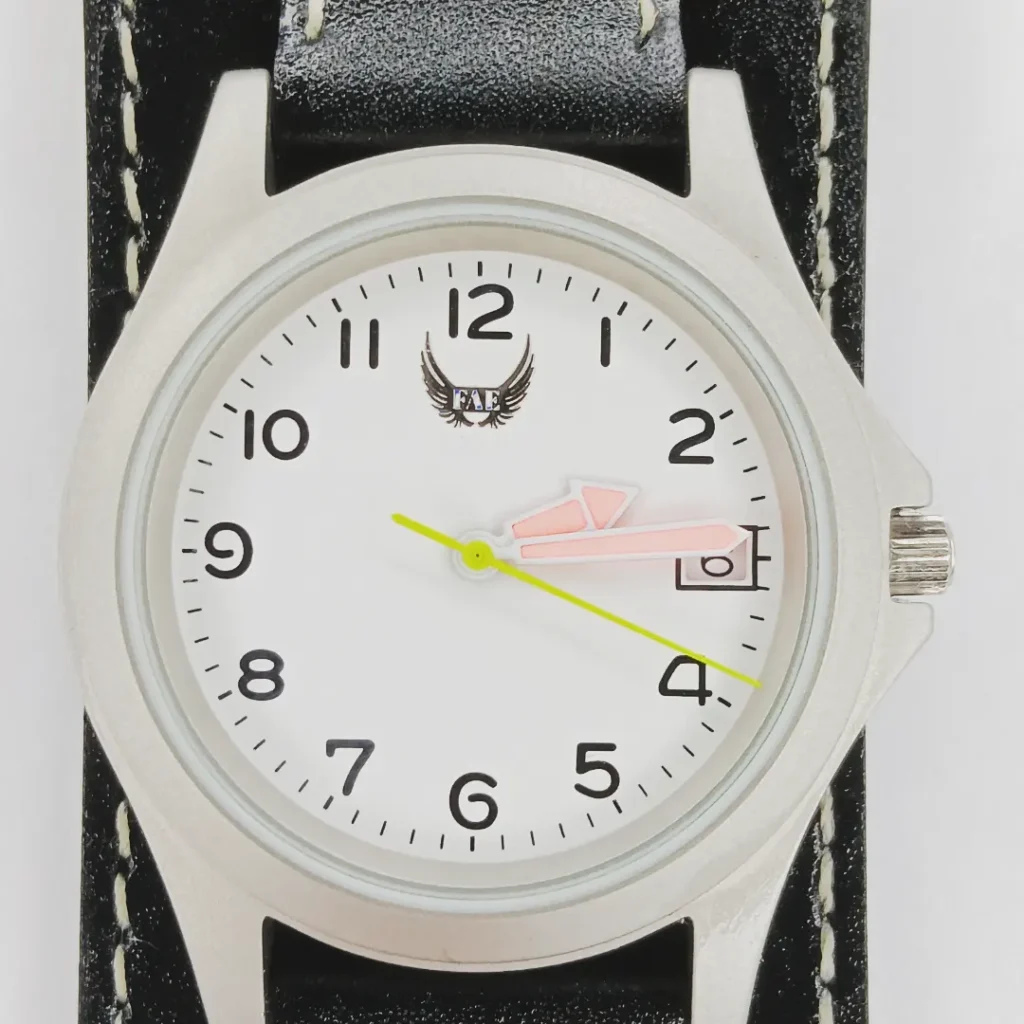
When someone finds out I am a Watchmaker, their first question tends to be, “How much should I spend on a watch?”
That is a good question, and a good question that applies to every purchase. “How much can you spend on a watch?” Is the response from a slick salesperson. “Not as much as I’d like!” is the usual response. This has solved the age-old question, “Do people wish they could spend an unlimited amount of money on a watch?” The answer is usually a resounding “Yes”.
But that doesn’t answer the question. So another typical response question is “What is your budget?” with the usual answer of “Not as much as I’d like!” Because to establish a budget, first you would have to list your requirements in a watch. You may not know your list of requirements, and it takes lots of education to reach that point. So we still can’t actually answer “How much should I spend on a watch?”
Simple Rule of Thumb
As a theoretical physicist, it comes naturally to me to think in terms of equations and math. This, as it turns out, is quite unusual, and less valuable than all my teachers told me.
As I have been contemplating the question of “How much should I spend on a watch?” for some time, I wanted to boil it down to some simple mathematical formula that would make sense to anyone.
Watch Industry?
It is difficult to make sense of an industry which in itself makes little sense, such as Watchmaking.
Watchmaking is a failed U.S. industry. Almost no jobs remain in the United States for Watchmaker. No watch factories exist. There are no U.S.-made major brands of watch available in any mass sales market.
The U.S watch industry died during the 1990s, as the last employed Watchmakers retired from service, and small jewlery stores with in-house Watchmakers permanently closed their doors.
The United States lost its pride in making things.
Watch Market?
Regardless of the US Watch Industry, U.S. citizens still wear watches. Maybe not every person, but still you see watches on people every day. They are still buying watches.
I checked a few of the major online sales channels, and the results are similar. The United States are buying extremely cheap, disposable watches at around the $30 price point. Unfortunately, it is a $3 watch.
Thousands of $30, crappy watches are being sold each month, at each online marketplace. These are never made in the United States. These are always “snap together” and never meant to be taken apart. If it dies, go buy a new one, ad throw this one in the landfill with all the others. Send another $30 permanently overseas and wear your crappy $30 watch another year, if you are lucky.
So how can I mathematically capture how much it costs to buy a crappy, mass produced, machine made of cheap materials, in a country with slave labor and no ecological responsibility, while still capturing how much it costs to buy a completely hand-made-from-scratch, Swiss museum piece?
And finally, today while walking the dogs, it came to me.
FAEstimate
You have to spend about $1 per week you wish to wear a watch.
FAE Watch Company
There it is, in all its perfect simplicity: $1 per week you want the watch to operate is all it takes to wear a watch.
It doesn’t matter the total number of weeks you wish to wear it for, this math still works.
It doesn’t matter how expensive, or how cheap a watch; simply multiply the number of weeks you wish to own, wear, and use your watch by $1 and that’s how much you will need to spend.
Want a watch for 5 years? 5 years times 52 weeks per year is $260. Pretty reasonable.
Want a watch for 40 years? 40 years, times 52 weeks per year, is $2600. Some of the $2600 will be paying a Watchmaker to maintain the watch over time, or the watch might just grind to a halt, like a car which has never had an oil change.
Cheap Watch Example
For that $30 bare-minimum in the cheap-watch market, you will get a daily-wear watch that will not quite last a year. Not if you really wear it each and every day, and no matter what you do. I would say 30 weeks, or about 7 months, is more likely a realistic lifespan for such a watch.
Can you make a $30 watch last longer by storing it in a safe with a nitrogen-only, temperature-controlled environment, with a master Watchmaker on-call to ensure it will live as long a life as possible? Of course. But notice how all the extra effort to keep the cheap watch alive still raises the cost above the original $30.
Can a watchmaker replace a battery, and try to clean it? Maybe, but it would cost more than a new one for $30. Chances are the cheap watch is already starting to decompose from remaining in daily contact with skin and its various salts, oils, fungi, and bacteria.
Will it last less than 30 weeks? Absolutely this is possible. With a plastic or if you are lucky glass crystal, the odds of it scratching are very, very high. How many scratches can you live with? If none, your 30 weeks to wear a cheap watch might get cut short.
If you like to lose things, and you like throwing things away, a cheap, $30 watch might be the best answer for you.
Let’s just hope the Asian factories will continue to create them so cheaply for you, because your refusal to purchase from the United States has made it that Asia is now your only hope. If Asian factories want a pay raise for its workers, or are expected to start following environmental impact laws, you can say Goodbye to your cheap, crappy watches and say Hello to expensive, crappy watches.
Expensive Watch Example
Let’s say someone overspends on a watch because they believe it’s got brand value over time. So they pay $16,000USD to buy a Swiss, automatic, mechanical dive watch, apparently designed for those who operate submarines.
The good news is that this watch is much more likely to be maintained carefully over its lifetime. It is more likely to make it into a Watchmaker for service. It is more likely to be carefully stored and well-treated. As a result, it is more likely to be functional and thus get “passed on” when its owner dies. This adds many years to the watch’s life, which could easily span many decades, if its various electroplated surfaces remain intact.
For this overpriced watch to achieve the rule of $1 per week, however, it would have to remain in service for approximately 300 years. That is because $16,000 pf $1 per week divided by 52 weeks per year gives about 307 years. It needs to be handed down about six times, or once every 50 years.
The Stainless Steel itself is at risk to not make it the 300 years. And it is more likely that the electroplated surfaces will decay first, followed by the dial, hands, and indices, as with most 100 year old watches.
But if you really want a watch that will last 300 years, it will take all of that $16000, and it will probably fall short since it is hard to test things over 100 years.
FAE Watch Example
I would put the FAE Quartz Field Watch against any other watch when considered with this new “$1 per week” FAEstimate. It’s extremely long service life, and high durability make it a watch that will function easily for the rest of your lifetime.
While the band, movement, dial, and hands may not last 200 years, the case definitely will. Stainless Steel should easily maintain service for 100 to 200 years.
Its crystal is not plastic, or even glass. It is a sapphire lens, which is scratch-resistant from almost all materials, except diamonds.
And while the shorter-lived materials cannot be avoided, they should still function for your lifetime, about 70-80 years.
For simplicity, we could even say it will last 50 years. This is a bit conservative, but realistic. But let’s not stop there.
Let’s just assume the FAE Quartz Feld Watch lasts only 25 years. You get it in college, and after about a dozen new bands, its still going strong after more than a couple decades of service. In fact, let’s just say 20 years of faithful service. That amount of time goes by in a blink.
Yet 20 years is more than a thousand weeks. For a FAE Quartz Field Watch, 20 years is just a warm-up.
Nevertheless, how much does a FAE Quartz Field Watch cost me per week when it lasts 20 years?
20 years times 52 weeks per year gives just over 1000 weeks; 1040 weeks. For a FAE Quartz Field Watch that is priced new at $249.95 that last 20 years: we divide $249.95 by 1040 weeks to give $0.24 per week. That’s a quarter per week to own a FAE Quartz Field Watch. Even with annual maintenance, the FAE Quartz Field Watch will still cost you less than $1 per week.
If it does last 50 years, which is very possible, we take 50 years, times 52 weeks per year, which gives 2600 weeks. $249.95 divided by 2600 weeks means it only costs ten cents per week! What about batteries? A 371 costs around $2, and you need one a little more than every three years. That’s around 16 batteries at $2 each, or $32 over the 50 years.
Cheap Watch for 50 Years
Just for fun, let’s assume someone changes their $30 cheap watch each 30 weeks during a 50 year watch-wearing lifespan.
50 years times 52 weeks per year is 2600 weeks. 2600 weeks is made of about 86, 30-week perods. That means, over 50 years, you would have to buy 86 cheap watches!
86 watches at $30 per watch is $2580 and a good 20 pounds of crappy watches piled in the landfill.

Custom FAE Quartz Field Watch – Made in USA
With a stout, solid-stainless-steel case, a scratch-resistant sapphire crystal, time accuracy to within seconds per month, and up to 40 months of continuous battery life, your Custom FAE Quartz Field Watch will go anywhere you go and take any punishment you take, for as long as humanly possible.